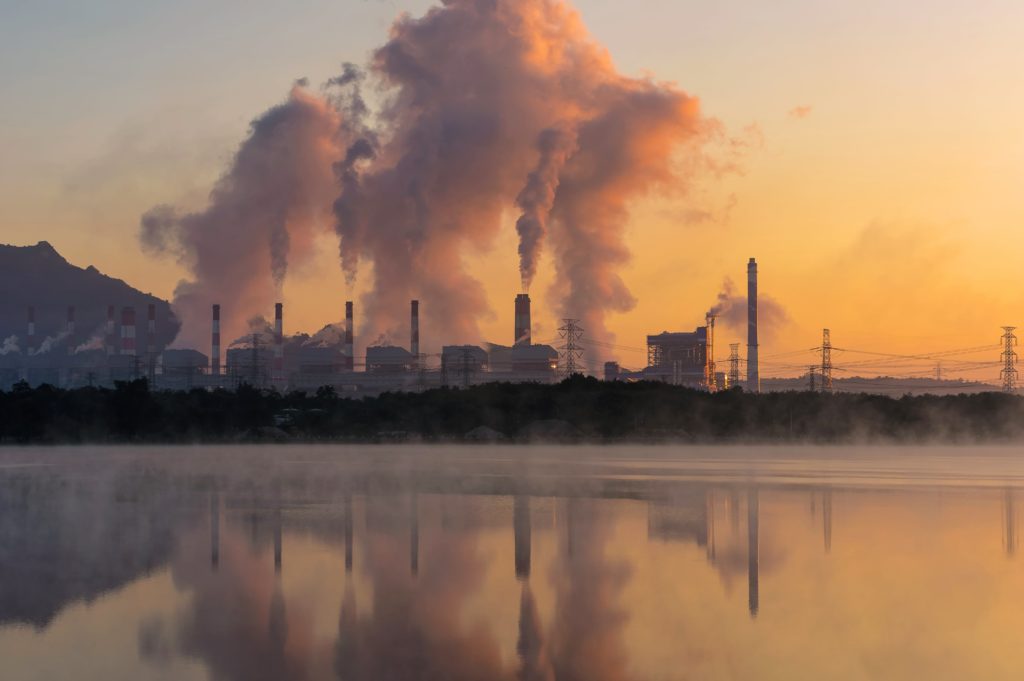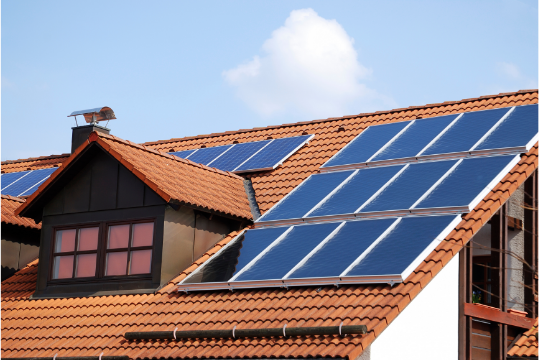Climate change is the biggest issue of our time

The built environment is one of the major contributors to carbon emissions. Deep emissions cuts have to occur urgently if we are to avoid the worst effects of climate change.
An increasing global reliance on fossil fuels – alongside emissions from industrial processes, deforestation, and animal farming – has meant an accelerating rise in atmospheric greenhouse gas concentrations and global temperature over the past 200 years. This is resulting in climate breakdown: with more frequent and intense storms, droughts, wildfires, sea levels rising and devastating losses for people and nature across the world; delay in action will result in an increasingly uninhabitable world.
In order to avoid catastrophic impacts, the Intergovernmental Panel on Climate Change (the IPCC) has encouraged efforts to restrict the average rise in global temperature to no more than 1.5°C above pre-industrial levels. Reaching this is a truly global challenge, one that all countries, organisations and individuals must participate in. The UK Government, through the Climate Change Act, has committed to reducing its greenhouse emissions to net zero by 2050, and 78% by 2035.
The built environment sector in the UK is responsible for around 40% of our total emissions. Meeting the needs of society within the ecological boundaries of our planet demands a reorganisation of the way we design, build and maintain buildings and infrastructure. Everyone and every organisation has a role to play. And importantly everyone should have access to and be included in the move to a low carbon society – a just transition.

FREE Carbon Calculator for supply chains
Developed in Partnership with the Sustainability Tool and the School’s Climate Action Group, the free Carbon Calculator aims to support supply chains with calculating their greenhouse gas emissions, and provides clients with a view of emissions embedded in their supply chains.
With 80-99% of the built environment’s total carbon footprint coming from the supply chain, the carbon calculator will play an integral role in supporting businesses in their fight against climate change.
Climate Change and Carbon - Sustainability Short
What do we mean by Climate Change? What are the causes of it and how can we take action to reduce carbon emissions?

How can carbon emissions be reduced?
Direct emissions – exhaust from vehicles, stacks at power facilities – aren’t the only source of greenhouse gases. The embodied energy and carbon ‘locked up’ in products, materials and assets is also important to consider. Emissions are released when energy is used to extract raw materials, to transport goods, and in manufacturing, as well as in the use and disposal of objects.
We can all reduce our emissions by using less energy on site, procuring goods with carbon in mind, and considering whole life carbon in the design stage. Reducing carbon can come in many guises: being resource efficient and creating less waste by using less materials and recycling will inherently have carbon benefits too.
The Construction Playbook, the National Infrastructure Strategy, the Government’s Net Zero Strategy – Build Back Better and frameworks such as the Net Zero Whole Life Carbon Roadmap for the Built Environment and the Carbon Reduction Code provide mechanisms and ambitions for our sector to actively tackle and reduce carbon emissions from the projects and assets we work on.
Energy and Carbon
Case Study: Reducing Carbon Emissions: Jewson Partnership Solutions
Case Study
Materials
Case Study: Reducing Carbon in Brick Manufacture: Michelmersh Hybrick Trial
Case Study
Energy and Carbon
Case Study: Cutting Carbon: Russell Roof Tiles
Video
Energy and Carbon
Innovating to support clients’ journey to net zero: Advanté Case Study
Video
Why Retrofit?
Introduction to Climate Change and Carbon
E-learning Module
Energy and Carbon
Carbon Footprinting & Measurement
E-learning module
Energy and Carbon
Carbon Reporting
E-learning module
Energy and Carbon
Carbon Reduction, Offsetting and Net Zero
E-learning module
Materials
Lower Carbon Concrete
E-learning module
Energy and Carbon
Delivering Carbon and Energy Efficient Buildings
E-learning module
Why Retrofit?
Carbon and Retrofit
E-learning module
Energy and Carbon
An SME’s guide to reducing your carbon footprint and environmental impact
Web link
Energy and Carbon
Science Based Targets – Sustainability Short
Video
Energy and Carbon
Achieving Net Zero carbon emissions: a review of the evidence behind carbon offsetting
Web link
Modern Slavery
Investing in renewable energy to power a just transition
Document/Presentation


 5 minutes
5 minutes